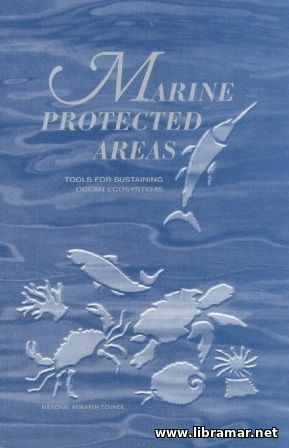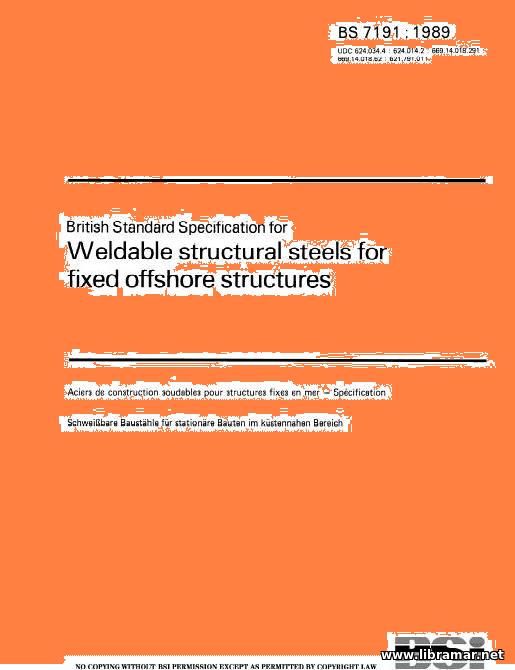First Offshore Operations in the United States
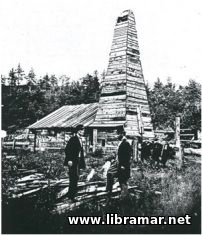
In the United States, all offshore oil and gas operations began in the late 19th century. It was Edwin Drake who drilled the very first oilwell in the America in 1859. He did it on a piece of land near Titusville, Pennsylvania. It was only thirty-eight years later, in 1897, that another enthusiast drilled the first offshore well in U.S. He drilled it offshore Southern California, immediately south of Santa Barbara.
In the late 1800s, a group of people founded the town of Summerland, California. The founders picked the site because of its pleasant, sunny climate. Coincidentally, it also had numerous springs. These springs did not, however, produce water; natural gas and crude oil bubbled out of them.
Since Summerland could use the gas to light its homes and businesses, and since oil could prove income, the city's residents took an interest in efficiently producing the springs. One of the citizens, H. L. Williams, was enough knowledgeable about extracting oil from the earth. So, just as drake had done earlier in Pennsylvania, Williams drilled several wells in the close vicinity of the springs. The wells allowed him to extract more oil than if he had simply dammed up the springs. These early wells were successful and, as a result, he and others drilled many more in the area.
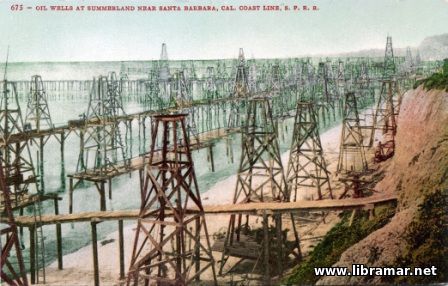 After drilling significant number of wells, the early oil drillers noticed that the wells drilled closer to the ocean were actually the best oil producers. Then, they decided to drill some wells on the beach. But, at that point, the Pacific Ocean stymied them. Experience convinced them, however, that more oil lay in the rock formations below the ocean, and the main question was how to drill for this oil.
After drilling significant number of wells, the early oil drillers noticed that the wells drilled closer to the ocean were actually the best oil producers. Then, they decided to drill some wells on the beach. But, at that point, the Pacific Ocean stymied them. Experience convinced them, however, that more oil lay in the rock formations below the ocean, and the main question was how to drill for this oil.
Williams did come up with the newly introduced idea of constructing a wharf or a pier; the drilling rig was supposed to be erected on it. The idea worked fine. The first offshore oilwell was drilled from a wharf made of wooden pilings and timbers and extended more than 300 feet (i.e. 90 meters) into the ocean. On the end of that wharf, Williams erected a drilling rig which was utilized to drill the first offshore well in the America. As it was expected, the well was an excellent producer and before long several more wharves were built. The longest of them stretched over 1200 feet (nearly 400 meters) into the Pacific.
Nowadays, offshore drilling activities commonly take place in the offshore more than half the nations of the planet and the primitive and shore-bound wooden wharves of the past do not confine offshore operators. Instead, today's operators drill the oil wells from modern and technically sophisticated steel- or concrete-made structures which are movable in many cases.
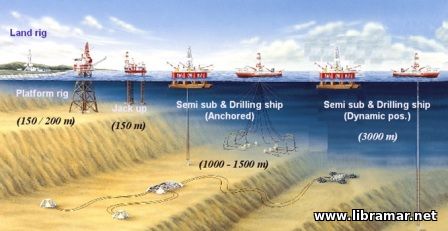 In addition, these structures are capable of floating while being transported, and often even while they are drilling. Furthermore, offshore oil rigs have already drilled and proven effective in waters over 7500 feet (making over 2200 meters) deep and up to 200 miles (over 300 kilometers) from shore. Offshore drilling and production have progressed far beyond those early efforts at Summerland.
In addition, these structures are capable of floating while being transported, and often even while they are drilling. Furthermore, offshore oil rigs have already drilled and proven effective in waters over 7500 feet (making over 2200 meters) deep and up to 200 miles (over 300 kilometers) from shore. Offshore drilling and production have progressed far beyond those early efforts at Summerland.
Modern offshore activities involve a broad range of technologies which are mainly similar to the technologies normally used to find, produce, and transport hydrocarbons on land. However, offshore activities include some additional technologies relating to a marine environment. As against oil operations taking place on land, offshore operations would normally involve naval architecture and stability, buoyancy and trim, anchoring and mooring techniques, and meteorology.
Though drilling and producing wells are considered important stages of offshore operations, the main scope goes further and include exploring - that is looking for likely areas where hydrocarbons may exist in the rock formations lying beneath the water surface. Moreover, offshore operations also include transportation of the produced oil and gas from their points of production to the refineries and plants located on land.
The "Read Later" function allows you to add material to this block with just one click. Just click on the icon and read the articles that interest you at any convenient time.
